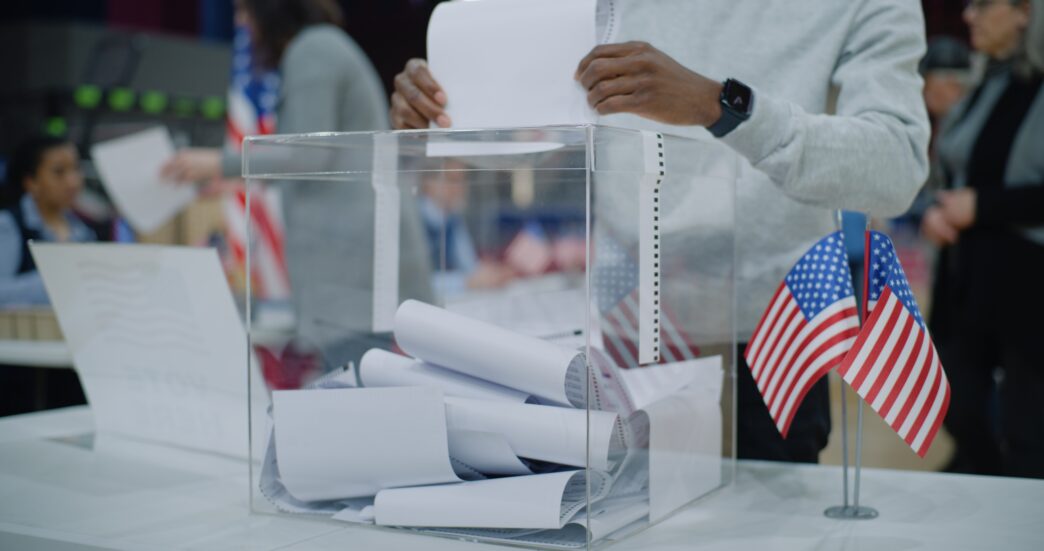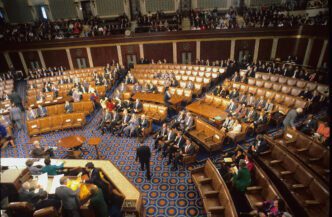Executive Summary
The Story So Far
Why This Matters
Who Thinks What?
Preliminary CNN exit polling, released on November 4, 2025, indicates widespread voter dissatisfaction with President Trump and significant concerns about the economy across four key electoral contests. A year into Trump’s second term, voters in governor’s races in Virginia and New Jersey, the mayoral race in New York City, and California’s Proposition 50 expressed anti-incumbent sentiments and a desire to send a message of opposition to the President.
Across these closely watched races, majorities of voters expressed disapproval of Trump, with strong disapproval outnumbering strong approval. Roughly half or more of the electorate in Virginia, New Jersey, and California viewed their vote as a direct message to Trump, predominantly one of opposition.
Despite these areas having voted Democratic in the previous year’s presidential election, the Democratic Party did not receive overwhelmingly positive reviews. Its favorability hovered around 50% in California and New York City, though the Republican Party was generally less popular. In New Jersey and Virginia, both major parties received roughly equal ratings from voters.
Economic concerns were prominent, though views varied by state. While most Virginia voters rated their state’s economy as excellent or good, majorities in California, New York City, and New Jersey described their state’s economic conditions as not good or poor. In all four locations, issues such as taxes, the cost of living, or the economy as a whole were the dominant concerns for voters.
Poll Methodology
The CNN Exit Polls are derived from the Voter Poll conducted by SSRS, which integrates thousands of pre-election interviews with data collected at polling places to represent the full electorate. This comprehensive approach provides insights into the demographic and political views of voters. The findings are considered estimates, with margins of error, and are subject to adjustment against final election results.
Key Race Dynamics
Virginia
Voters in Virginia’s gubernatorial contest between Democrat Abigail Spanberger and Republican Winsome Earle-Sears showed significant dissatisfaction with the national direction, with over 6 in 10 expressing anger or dissatisfaction. Many reported being financially affected by federal cuts, though outgoing Republican Governor Glenn Youngkin maintained majority approval.
On social issues, just over half of voters believed Trump administration actions on immigration enforcement had gone too far, and a similar share felt society’s support for transgender rights had overstepped. A strong majority of 61% supported legal abortion in most or all cases. Spanberger’s favorability was modestly higher than Earle-Sears’, with most voters supporting their chosen candidate rather than opposing the rival. Earle-Sears’ supporters prioritized shared values, with the economy and immigration as top concerns, while Spanberger’s backers focused on the economy, followed by healthcare.
New Jersey
New Jersey’s gubernatorial race, pitting Democrat Mikie Sherrill against Republican Jack Ciattarelli, unfolded amidst the unpopularity of both Trump and the state’s outgoing Democratic Governor Phil Murphy. Ciattarelli’s supporters largely sought a candidate who would bring change, while Sherrill’s voters prioritized honesty, trustworthiness, and shared values.
Voters identified taxes and the economy as the state’s most pressing issues, significantly outpacing immigration, crime, or healthcare. Approximately 7 in 10 voters considered property tax rates a major problem, and around 6 in 10 expressed similar concerns about electricity costs. Political corruption in the state was also cited as a major problem by more than half of voters.
New York City
New York City’s multi-candidate mayoral race featured Democrat Zohran Mamdani, independent Andrew Cuomo, and Republican Curtis Sliwa. Mamdani and Sliwa voters largely cast ballots in support of their chosen candidates, whereas Cuomo’s supporters were split between backing him and opposing rivals.
Mamdani voters overwhelmingly cited the cost of living as their top issue, while Cuomo voters were divided between cost of living and crime. Sliwa’s supporters predominantly viewed crime as the city’s biggest problem. Most voters reported holding steady or improving financially, yet nearly 60% still considered the cost of living the city’s most important issue, and over 7 in 10 found housing costs to be a major problem. Approximately 4 in 10 voters considered candidates’ positions on Israel a significant factor in their vote.
California
California voters weighed Proposition 50, a measure to temporarily enact a new congressional map drawn by Democrats to counter Republican-driven redistricting in other states. Around 7 in 10 voters considered which party controls Congress to be very important, and an overwhelming majority preferred non-partisan commissions to draw district lines rather than the party in power.
Those supporting Proposition 50 largely viewed it as a response to GOP-led redistricting elsewhere, rather than the optimal method for drawing districts. About half of California voters believed neither party was handling redistricting fairly. Approximately three-quarters of voters expressed dissatisfaction or anger with the national direction, and about half saw their vote as a way to oppose Trump. Around 6 in 10 felt the Trump administration’s immigration enforcement actions had gone too far, and most opposed the governor cooperating with the administration on these efforts. A majority also opposed the federal government sending the National Guard into major California cities. The cost of living was deemed unaffordable by over 80% of voters, with the economy significantly outweighing immigration, healthcare, crime, or climate change as the state’s top issue.
Key Takeaways
The preliminary exit poll results highlight a complex political landscape one year into President Trump’s second term, marked by voter dissatisfaction with national affairs and persistent economic anxieties. While specific issues vary by region, a consistent theme of anti-incumbency and a desire to register opposition to Trump emerged across these pivotal state and local elections.








